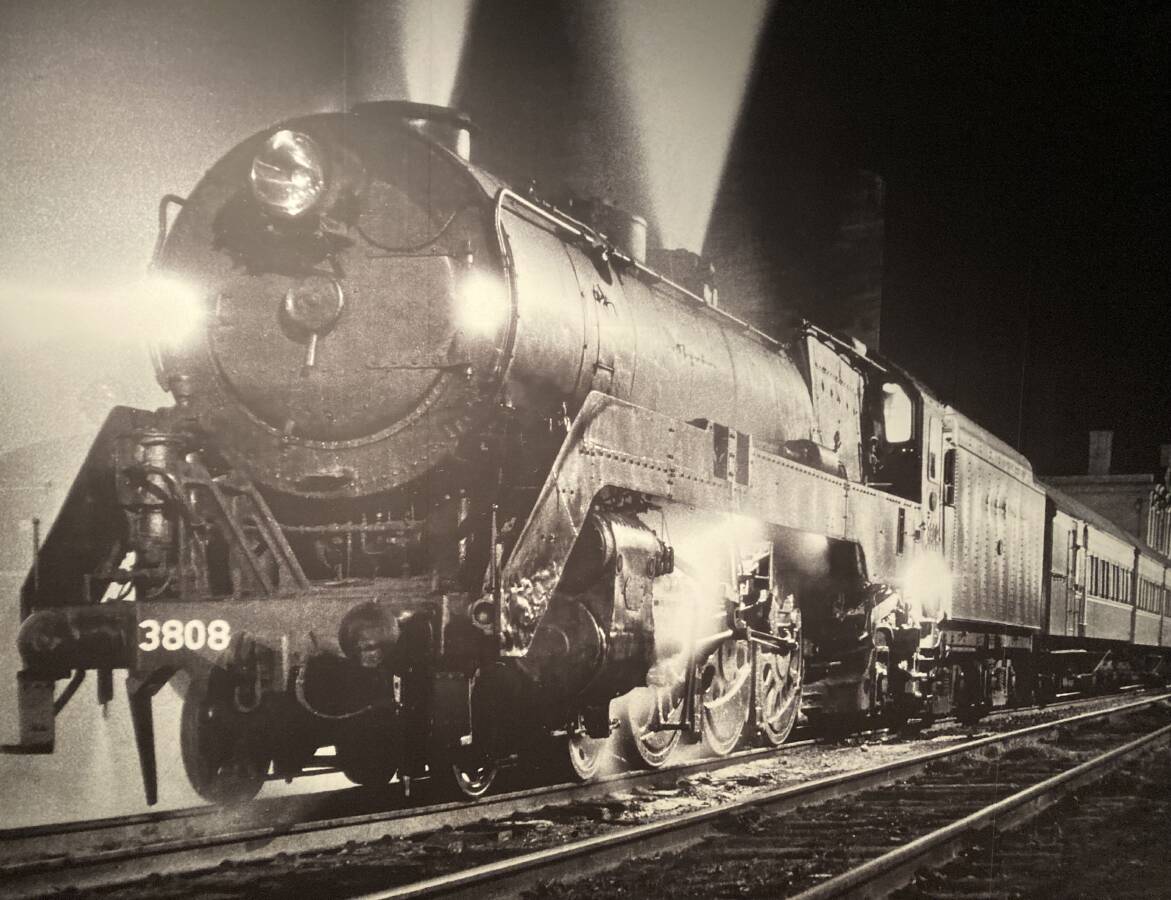
STEAMFEST is a festival unlike any other, celebrating the bygone age of steam beloved by so many fans, young and old.
This weekend, steam is again at centre stage in Maitland as crowds of enthusiasts gather for all things steamy.
Maitland crowds will hear the hiss and clank of locomotives and smell steam-powered machinery close up and in action. It should be a great time, reminding us of an age - not so long ago - when steam trains hauling coal dominated the Hunter Valley freight network; carrying cargoes of 'black diamonds' (coal) to fuel the furnaces of industry
By coincidence, there's an unusual event also celebrating the stream age not so far away, in Newcastle, but there's no need to rush, as it's planned to run until November.
It's a special photographic exhibition called Railway Portraits, which recalls the glory days of steam over about 60 years by enthusiasts Robert and Bruce Wheatley.
It's very fitting that this special display is being held in the Newcastle Region Library's Lovett Gallery, as the district's always had a long connection with steam locos that once powered NSW.
There's the famous passenger train, the 3801 Newcastle Flyer, of course, which has been described as the last steam express train in Australia up to December 1970 officially.
The private Richmond Vale line at Minmi was also acknowledged as the last commercial steam train operation in the nation. That's when its ageing locos huffed and puffed across Hexham swamp until the line closed in late 1987 with coal trucks replacing steam locos.
The Newcastle library photo exhibition displays about 50 stark and evocative black and white scenes captured by the two Wheatley brothers from the 1960s. As teenagers, Robert and Bruce Wheatley daringly hitched rides on rail freight trains across NSW with a humble, very primitive box brownie camera. But its slow shutter speed hampered inventive shots.
They soon upscaled to a 35mm camera, then later, large format cameras, to capture the last days of the beauty and grime of NSW's steam workhorses.
Given the freedom by their parents to roam the NSW railway network by themselves for up to a week at a time, they travelled on all types of steam trains, carrying backpacks and surviving on pocket money.
Realising they would be tolerated travelling on goods trains by riding with the guard, they also slept in railway waiting rooms and, as their confidence grew, they managed to travel with loco crews in engine cabs capturing exceptional images, never to be repeated,
The candid photographs span a passing era as the Wheatleys often specialised on the human component of the experience, such as crewmen shovelling ash out the boiler or a crewman removing a cinder from his eye.

Most striking, however, were the moody, atmospheric shots they captured in chilly, misty pre-dawn places from Hamilton, to Dunedoo, to Junee, Gosford, Orange and Gulgong as boiler steam plumed over railyards from panting locomotives.
Snapping these incredible scenes of light and steam also required a bit of ingenuity. As their travelling experience grew, they often set off at 2am with camera to experiment at stations or railway yards to discover how best to freeze frame a slumbering loco quietly blowing smoke or catch the eerie glow from a firebox reflecting on those around it.
The early morning rituals of lighting loco fires and fuelling up with coal and water under harsh light remind us of why train buffs always thought steam locos had a soul.
The photographic exhibition is sourced from the first five volumes published of the Wheatley brothers' popular Railway Portraits series of books taken around the state. A sixth publication of more unforgettable bygone images is apparently coming.
The rare and exceptional photographic record of the last days on steam on show also prominently showcases Newcastle and the Hunter Valley. Sites range from Broadmeadow depot, to Hamilton, Port Waratah, to Martins Creek, Kotara, Adamstown and Dungog as seen from 1968 to 1972.
Featured at the Newcastle library exhibition is an attention-grabbing picture of steam locos 'crossing the trestle' of the long approach to Paterson bridge in May 1969.
Then there's a loco emerging from the fog at Kotara in May 1967, then another of a Merriwa goods train on the Sandy Hollow line in March 1969.
Then not as dramatic, perhaps, is a 1960s picture of a Belmont passenger train at Adamstown on the now closed and re-purposed Fernleigh walking track. Also of interest for those Novocastrians with long memories is a mood shot, snapped at Port Waratah, of BHP workers cycling to work across train lines.
So, it's extraordinary to realise that when a trusting mother and father allowed Robert and Bruce to wander at the ages of 16 and 13 years respectively, that neither of them had any photographic training, but were just passionate about steam trains.
Robert Wheatley, in particular, said he saw the camera as a painter's brush and just aimed to get the best images possible.
Bruce also liked to frame a picture in the mind's eye, but admitted his first experience, aided by his father, getting up close to a loco engine was "terrifying". Being lifted up onto the footplate and feeling the heat of the firebox flames "and seeing those demonic looking brass dials high above was all too much for me and I burst into tears".
When the NSW government steam era finally ended in 1973, the brothers put their huge archive of steam era negatives aside before later deciding to self-publish at least one volume of their priceless rail portraits.
Their sceptical father, though, said: "It won't sell".
The years passed, and an appreciative public began buying more and more copies of what they soon realised was a unique historical record of years past.
The Wheatley brothers today still sell their rail books in markets, shopping centres and at special train occasions, such as at Maitland's Steamfest, where I have seen their stall in the past.







